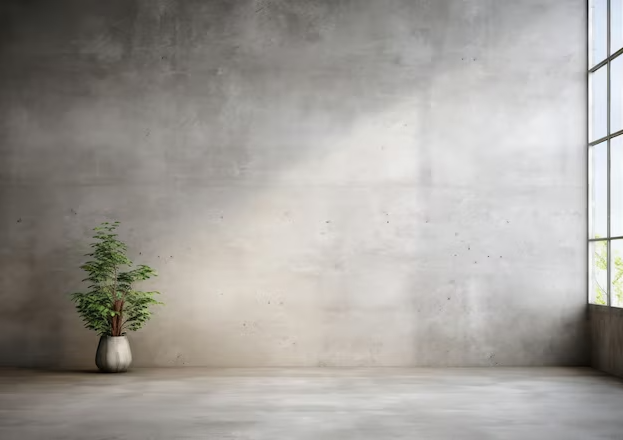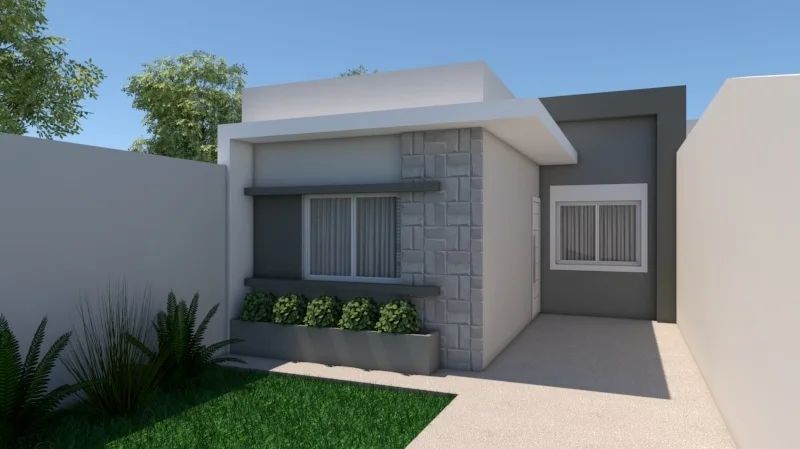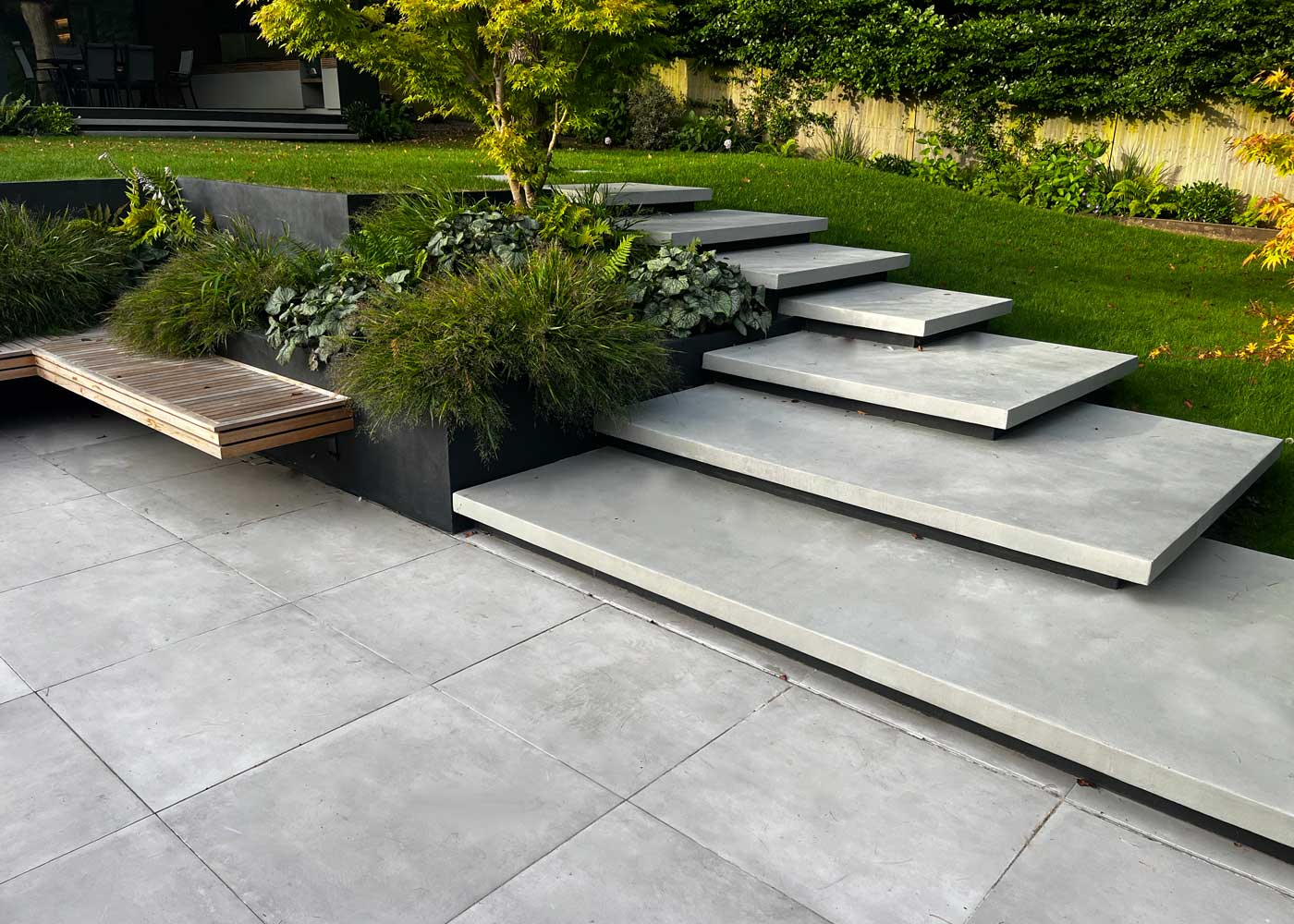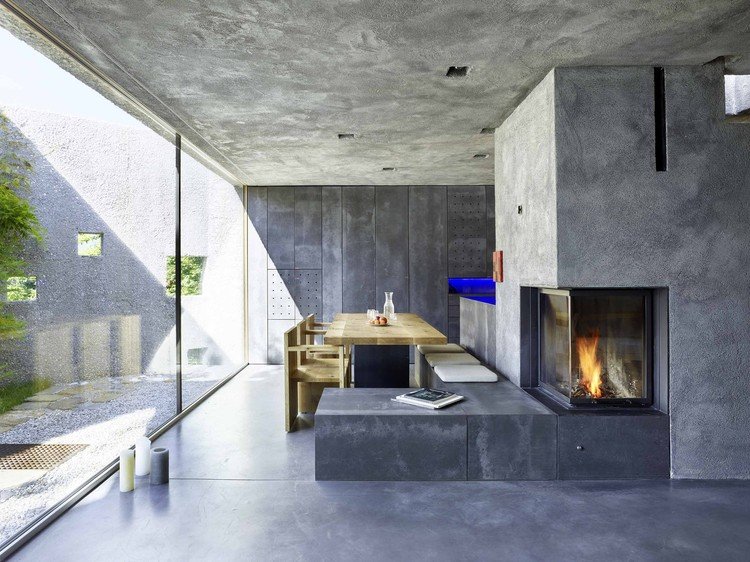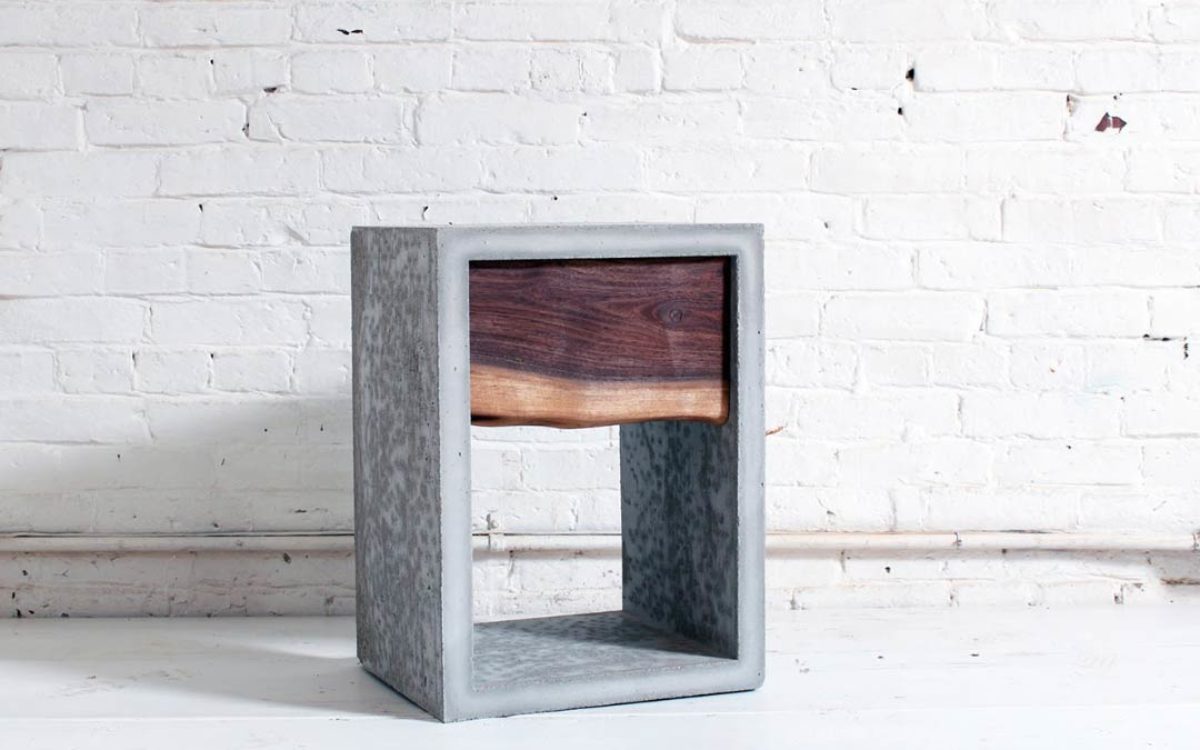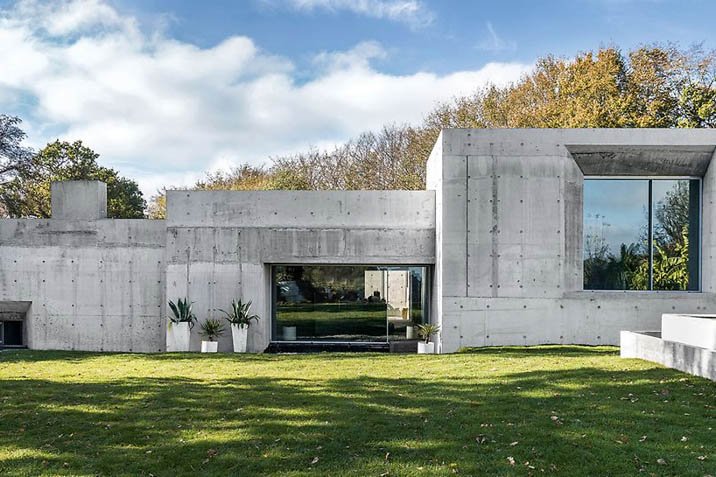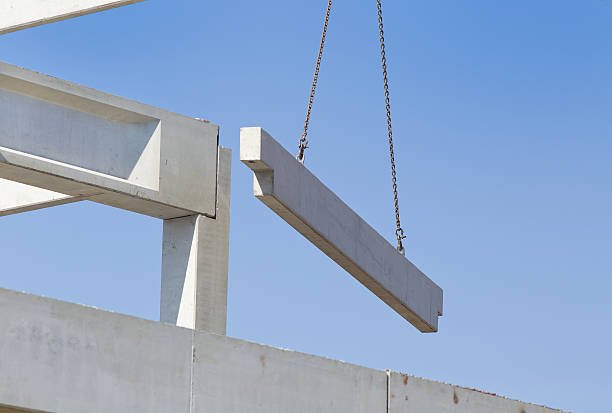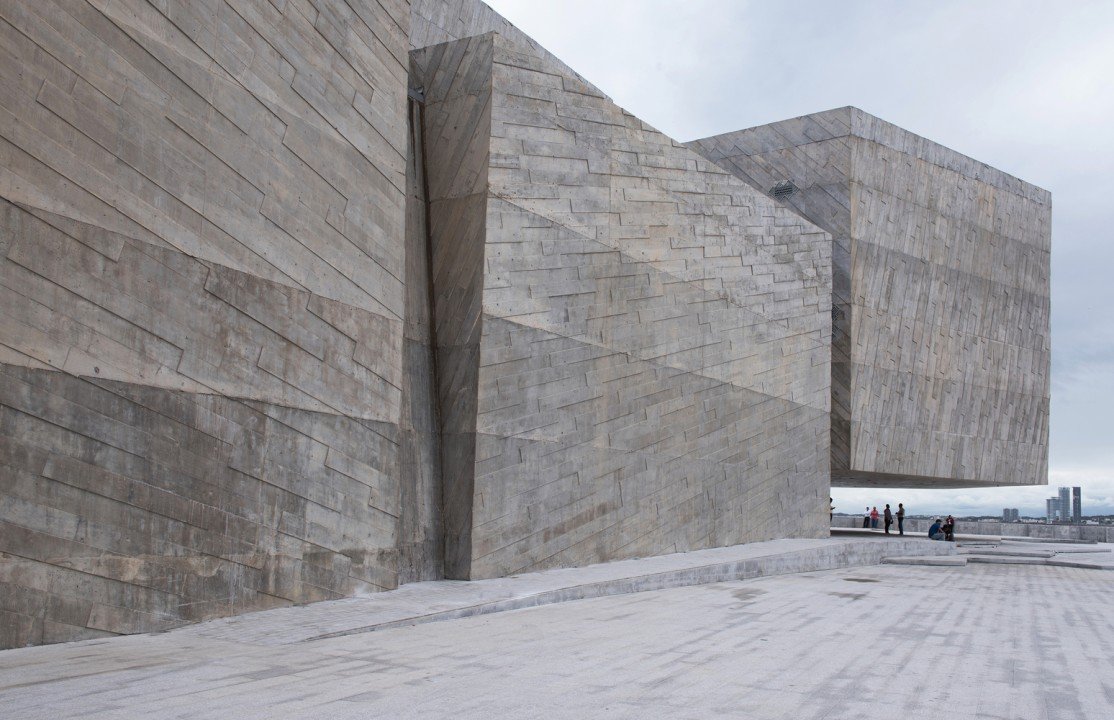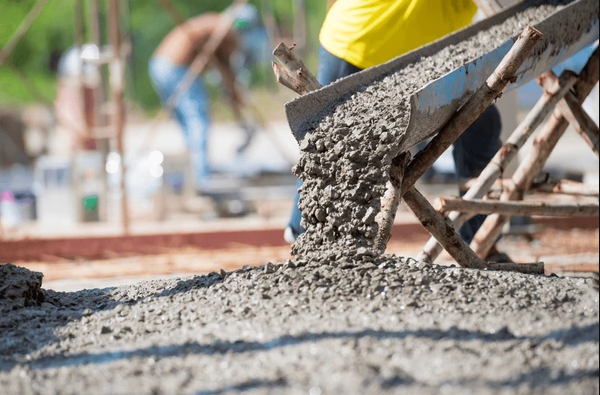Lighting up with Concrete: Strategies to Harness Natural Light Indoors Natural light is one of the most sought-after elements in interior design, as it can significantly enhance the ambiance and functionality of a space. In this guide, we’ll explore strategies to harness natural light indoors using concrete as a key element. From reflective surfaces to strategic window placements, concrete offers innovative solutions to maximize sunlight and brighten up your living spaces. Let’s dive into the world of lighting up with concrete and discover how it can transform your home into a radiant and inviting sanctuary. Reflective Concrete Surfaces: One effective strategy for maximizing natural light is to use reflective concrete surfaces throughout your home. Polished concrete floors, countertops, and walls can help bounce light around the room, creating a bright and airy atmosphere. Consider incorporating large mirrors or metallic accents to further enhance the reflective properties of concrete and amplify the impact of natural sunlight. Strategic Window Placements: Another key aspect of harnessing natural light is strategic window placements. When designing or renovating your home, consider the orientation of windows to maximize sunlight exposure throughout the day. South-facing windows tend to receive the most sunlight, while north-facing windows provide consistent, diffused light. Incorporate skylights or clerestory windows to bring in additional natural light from above, creating a sense of openness and connection to the outdoors. Translucent Concrete Elements: Translucent concrete, also known as light-transmitting concrete or Litracon, is a revolutionary material that allows light to pass through its surface. By incorporating translucent concrete elements such as countertops, partitions, or decorative panels, you can introduce natural light into interior spaces while maintaining privacy and visual interest. Experiment with different patterns and textures to create stunning visual effects that add depth and dimension to your home. Indoor Garden Atriums: Create a connection to nature and flood your home with natural light by incorporating indoor garden atriums or sunrooms. These light-filled spaces serve as green sanctuaries where you can relax and recharge while enjoying the beauty of the outdoors. Use concrete planters, benches, and pathways to integrate seamlessly with the surrounding architecture and create a cohesive indoor-outdoor experience. Smart Lighting Control Systems: Complement natural light with smart lighting control systems that adjust artificial lighting levels based on the time of day and natural light conditions. Incorporate dimmable LED fixtures and automated blinds or curtains to optimize energy efficiency and create a customizable lighting environment that adapts to your lifestyle and preferences. Conclusion: In conclusion, harnessing natural light indoors is not only beneficial for your well-being but also enhances the beauty and functionality of your home. By incorporating concrete elements such as reflective surfaces, strategic window placements, translucent panels, indoor garden atriums, and smart lighting control systems, you can create a luminous and inviting living space that celebrates the beauty of natural sunlight. Embrace the versatility and innovation of concrete in lighting up your home and enjoy the radiant warmth and comfort it brings to your everyday life. Recents post concrete work sustainable Lighting up with Concrete: Strategies to Harness Natural Light Indoors However, the quest for innovation in concrete infrastructure has taken center stage, bridging the gap between traditional methods and groundbreaking… Read More Building Comfort: Tips for Integrating Concrete in a Cozy Home However, the quest for innovation in concrete infrastructure has taken center stage, bridging the gap between traditional methods and groundbreaking… Read More Concrete in the Garden: Creative Ideas to Beautify Your Outdoor Space However, the quest for innovation in concrete infrastructure has taken center stage, bridging the gap between traditional methods and groundbreaking… Read More DIY with Concrete: Creative Projects to Beautify Your Home on a Budget However, the quest for innovation in concrete infrastructure has taken center stage, bridging the gap between traditional methods and groundbreaking… Read More Concrete in Interior Design: Tips to Incorporate Industrial Elegance into Your Home However, the quest for innovation in concrete infrastructure has taken center stage, bridging the gap between traditional methods and groundbreaking… Read More Concrete at Home: Simple Steps to Create Decorative and Functional Elements However, the quest for innovation in concrete infrastructure has taken center stage, bridging the gap between traditional methods and groundbreaking… Read More Load More End of Content.
Building Comfort: Tips for Integrating Concrete in a Cozy Home
Building Comfort: Tips for Integrating Concrete in a Cozy Home Your home should be a sanctuary of comfort and warmth, and concrete can play a surprisingly cozy role in achieving that ambiance. In this guide, we’ll explore how to integrate concrete into your home’s interior design in a way that enhances comfort and coziness. From textured walls to radiant floors, concrete offers a range of possibilities to create a snug and inviting living space that you’ll love coming home to. Textured Concrete Walls: Create depth and warmth in your home with textured concrete walls that add visual interest and tactile appeal. Whether you opt for stamped patterns or custom textures, concrete walls provide a solid foundation for cozying up your living space. Consider accent walls in living rooms or bedrooms to create a focal point that invites relaxation and comfort, and pair with soft furnishings and warm lighting for a cozy atmosphere. Radiant Concrete Floors: Say goodbye to cold feet with radiant concrete floors that provide warmth and comfort throughout your home. Radiant floor heating paired with concrete floors offers an energy-efficient solution for keeping your space cozy and inviting, even on the coldest days. Choose from polished, stained, or stamped finishes to complement your interior decor and create a seamless flow between rooms. Concrete Fireplace Surrounds: Nothing says comfort like gathering around a crackling fire on a chilly evening, and a concrete fireplace surround can enhance the cozy ambiance of your living space. Whether you prefer a sleek and modern design or a textured and rustic finish, concrete fireplace surrounds offer durability and visual appeal that elevates the comfort level of your home. Customize with built-in shelving or mantels to create a cozy focal point for relaxation and entertainment. Concrete Countertops: In the heart of the home, concrete countertops offer both beauty and practicality. With seamless integration and customization options, concrete countertops can be tailored to fit your kitchen’s layout and design aesthetic. Add warmth and comfort to your kitchen with concrete countertops that provide a durable and stylish surface for cooking, dining, and gathering with loved ones. Optimizing Natural Light: Maximize natural light in your home by strategically placing windows and glass doors to harness sunlight throughout the day. Concrete’s reflective properties can help amplify natural light, creating a bright and airy ambiance that enhances comfort and well-being. Consider open floor plans and minimalistic decor to allow sunlight to flow freely through your home, creating a cozy and inviting atmosphere. Conclusion: In conclusion, concrete offers endless possibilities for enhancing comfort and coziness in your home. Whether you’re incorporating textured walls, radiant floors, fireplace surrounds, countertops, or optimizing natural light, concrete allows you to create a warm and inviting living space that reflects your unique style and personality. Embrace the versatility and comfort of concrete and transform your home into a cozy retreat where you can relax, recharge, and enjoy the comforts of everyday living. Recents post concrete work sustainable Building Comfort: Tips for Integrating Concrete in a Cozy Home However, the quest for innovation in concrete infrastructure has taken center stage, bridging the gap between traditional methods and groundbreaking… Read More Concrete in the Garden: Creative Ideas to Beautify Your Outdoor Space However, the quest for innovation in concrete infrastructure has taken center stage, bridging the gap between traditional methods and groundbreaking… Read More DIY with Concrete: Creative Projects to Beautify Your Home on a Budget However, the quest for innovation in concrete infrastructure has taken center stage, bridging the gap between traditional methods and groundbreaking… Read More Concrete in Interior Design: Tips to Incorporate Industrial Elegance into Your Home However, the quest for innovation in concrete infrastructure has taken center stage, bridging the gap between traditional methods and groundbreaking… Read More Concrete at Home: Simple Steps to Create Decorative and Functional Elements However, the quest for innovation in concrete infrastructure has taken center stage, bridging the gap between traditional methods and groundbreaking… Read More Refresh Your Space: Fresh Ideas to Transform Your Home with Concrete However, the quest for innovation in concrete infrastructure has taken center stage, bridging the gap between traditional methods and groundbreaking… Read More Load More End of Content.
Concrete in the Garden: Creative Ideas to Beautify Your Outdoor Space
Concrete in the Garden: Creative Ideas to Beautify Your Outdoor Space Your garden is more than just a plot of land; it’s an extension of your home and a canvas for your creativity. Concrete, often associated with urban landscapes, can add a touch of modernity and sophistication to your outdoor sanctuary. In this comprehensive guide, we’ll explore innovative ways to incorporate concrete into your garden design, from stylish planters to sturdy pathways. Let’s dive into the world of concrete in the garden and discover how it can transform your outdoor space into a breathtaking oasis. Stylish Concrete Planters: Concrete planters are not only durable but also versatile and stylish. They come in various shapes, sizes, and finishes, allowing you to find the perfect match for your garden aesthetic. Consider using DIY concrete molds to create unique planters that reflect your personality or opt for pre-made designs for convenience. Whether you prefer sleek and modern or textured and rustic, concrete planters will add a touch of sophistication to your garden beds or patio. Functional Concrete Pathways: Create a seamless flow in your garden with concrete pathways that not only guide visitors but also add visual interest to your landscape. Stamped concrete offers endless design possibilities, allowing you to mimic the look of natural stone or brick with the durability of concrete. Exposed aggregate pathways, on the other hand, provide texture and traction while blending harmoniously with the surrounding greenery. Whichever option you choose, concrete pathways will enhance the overall charm and functionality of your garden. Versatile Concrete Furniture: Take your outdoor living to the next level with concrete furniture that combines style and durability. From benches and tables to lounge chairs and stools, concrete furniture offers endless possibilities for creating inviting seating areas and dining spaces in your garden. Customize your furniture with cushions and accessories to add comfort and personality, and enjoy outdoor gatherings in style for years to come. Artistic Concrete Sculptures: Make a statement in your garden with concrete sculptures that serve as focal points and conversation starters. Whether you opt for abstract designs or whimsical figures, concrete sculptures add personality and charm to any outdoor setting. Commission a local artist to create a custom piece or unleash your creativity with DIY concrete molds and forms. Place sculptures strategically throughout your garden to create visual interest and spark imagination. Practical Concrete Retaining Walls: Manage slopes and define garden beds with concrete retaining walls that blend form and function seamlessly. Concrete retaining walls offer strength and stability while adding architectural interest to your landscape. Incorporate built-in seating or planting pockets to maximize space and create cozy corners for relaxation and contemplation. With proper design and installation, concrete retaining walls will enhance the beauty and usability of your garden for years to come. Conclusion: In conclusion, concrete is a versatile and durable material that offers endless possibilities for beautifying and enhancing your outdoor space. Whether you’re creating stylish planters, functional pathways, versatile furniture, artistic sculptures, or practical retaining walls, concrete allows you to unleash your creativity and transform your garden into a breathtaking oasis that reflects your unique style and personality. Embrace the beauty and versatility of concrete and elevate your outdoor living experience to new heights. Recents post concrete work sustainable Concrete in the Garden: Creative Ideas to Beautify Your Outdoor Space However, the quest for innovation in concrete infrastructure has taken center stage, bridging the gap between traditional methods and groundbreaking… Read More DIY with Concrete: Creative Projects to Beautify Your Home on a Budget However, the quest for innovation in concrete infrastructure has taken center stage, bridging the gap between traditional methods and groundbreaking… Read More Concrete in Interior Design: Tips to Incorporate Industrial Elegance into Your Home However, the quest for innovation in concrete infrastructure has taken center stage, bridging the gap between traditional methods and groundbreaking… Read More Concrete at Home: Simple Steps to Create Decorative and Functional Elements However, the quest for innovation in concrete infrastructure has taken center stage, bridging the gap between traditional methods and groundbreaking… Read More Refresh Your Space: Fresh Ideas to Transform Your Home with Concrete However, the quest for innovation in concrete infrastructure has taken center stage, bridging the gap between traditional methods and groundbreaking… Read More Bridging the Gap: Exploring Innovations in Concrete Infrastructure However, the quest for innovation in concrete infrastructure has taken center stage, bridging the gap between traditional methods and groundbreaking… Read More Load More End of Content.
DIY with Concrete: Creative Projects to Beautify Your Home on a Budget
DIY with Concrete: Creative Projects to Beautify Your Home on a Budget Looking to add a touch of modern charm to your home without breaking the bank? Look no further than concrete. With its affordability and versatility, concrete is the perfect material for DIY projects that can enhance your home’s aesthetic appeal. In this guide, we’ll explore some creative and budget-friendly DIY projects using concrete. Concrete Planters Concrete planters are a stylish and functional addition to any indoor or outdoor space. They add a contemporary touch to your decor while providing a home for your favorite plants. With molds readily available at most craft stores, you can easily create your own concrete planters in various shapes and sizes. Concrete Countertops Upgrade your kitchen or bathroom with sleek concrete countertops. Not only are concrete countertops durable and easy to maintain, but they also offer a modern and industrial aesthetic. With some basic tools and materials, you can pour and mold your own concrete countertops to fit your space perfectly. Concrete Wall Art Make a statement with DIY concrete wall art. Whether you opt for geometric shapes, abstract designs, or custom molds, concrete wall art adds texture and visual interest to any room. Get creative with colors, textures, and finishes to customize your wall art to Concrete Candle Holders Create ambiance in your home with DIY concrete candle holders. These stylish and minimalist accessories add a warm glow to any space. With some PVC pipes or cardboard tubes as molds, you can easily pour and mold your own concrete candle holders in various shapes and sizes. Conclusion In conclusion, DIY projects with concrete offer endless possibilities for beautifying your home on a budget. Whether you’re crafting concrete planters, countertops, wall art, or candle holders, the key is to unleash your creativity and embrace the versatility of this affordable and stylish material. With a little time and effort, you can create custom pieces that add a touch of modern elegance to your home décor. So roll up your sleeves, gather your materials, and get ready to transform your space with DIY concrete projects! Recents post concrete work sustainable DIY with Concrete: Creative Projects to Beautify Your Home on a Budget However, the quest for innovation in concrete infrastructure has taken center stage, bridging the gap between traditional methods and groundbreaking… Read More Concrete in Interior Design: Tips to Incorporate Industrial Elegance into Your Home However, the quest for innovation in concrete infrastructure has taken center stage, bridging the gap between traditional methods and groundbreaking… Read More Concrete at Home: Simple Steps to Create Decorative and Functional Elements However, the quest for innovation in concrete infrastructure has taken center stage, bridging the gap between traditional methods and groundbreaking… Read More Refresh Your Space: Fresh Ideas to Transform Your Home with Concrete However, the quest for innovation in concrete infrastructure has taken center stage, bridging the gap between traditional methods and groundbreaking… Read More Bridging the Gap: Exploring Innovations in Concrete Infrastructure However, the quest for innovation in concrete infrastructure has taken center stage, bridging the gap between traditional methods and groundbreaking… Read More Concrete Elegance: Aesthetic Approaches to Architectural Design In the realm of architectural design, concrete often conjures images of strength and durability. However, the marriage of concrete and… Read More Load More End of Content.
Concrete in Interior Design: Tips to Incorporate Industrial Elegance into Your Home
Concrete in Interior Design: Tips to Incorporate Industrial Elegance into Your Home Industrial-inspired interior design has surged in popularity in recent years, and concrete plays a central role in achieving this aesthetic. Its raw and minimalist appeal adds a touch of urban sophistication to any space. In this guide, we’ll explore some tips for incorporating concrete into your home’s interior design to achieve that sought-after industrial elegance. Embracing Minimalism At the core of industrial design is the principle of minimalism. Concrete’s clean lines and neutral tones make it an ideal material for creating a sleek and uncluttered look in your home. Embrace simplicity by using concrete as a focal point in your design, whether it’s through a statement wall, flooring, or furniture pieces. Mixing Materials To soften the harshness of concrete and add warmth to your space, consider mixing materials. Pair concrete with natural elements like wood, leather, or textiles to create a balanced and inviting atmosphere. The juxtaposition of textures adds depth and visual interest to your interior design scheme. Playing with Light and Space One of concrete’s most striking qualities is its ability to interact with light and space. Use strategically placed lighting to highlight concrete features and create dramatic shadows. Additionally, consider open floor plans and minimalist furniture to maximize the sense of space and airiness in your home. Adding Softness and Comfort While concrete is known for its industrial appeal, it’s essential to balance its hardness with elements of softness and comfort. Incorporate plush rugs, cozy throws, and soft furnishings to create a welcoming and livable environment. This juxtaposition of textures adds warmth and dimension to your interior design. Conclusion In conclusion, concrete is a versatile and captivating material that can elevate your home’s interior design to new heights of industrial elegance. By embracing minimalism, mixing materials, playing with light and space, and adding touches of softness and comfort, you can create a space that seamlessly blends urban sophistication with inviting warmth. With these tips in mind, you’re ready to embark on a journey of transforming your home into a stylish sanctuary. Recents post concrete work sustainable Concrete in Interior Design: Tips to Incorporate Industrial Elegance into Your Home However, the quest for innovation in concrete infrastructure has taken center stage, bridging the gap between traditional methods and groundbreaking… Read More Concrete at Home: Simple Steps to Create Decorative and Functional Elements However, the quest for innovation in concrete infrastructure has taken center stage, bridging the gap between traditional methods and groundbreaking… Read More Refresh Your Space: Fresh Ideas to Transform Your Home with Concrete However, the quest for innovation in concrete infrastructure has taken center stage, bridging the gap between traditional methods and groundbreaking… Read More Bridging the Gap: Exploring Innovations in Concrete Infrastructure However, the quest for innovation in concrete infrastructure has taken center stage, bridging the gap between traditional methods and groundbreaking… Read More Concrete Elegance: Aesthetic Approaches to Architectural Design In the realm of architectural design, concrete often conjures images of strength and durability. However, the marriage of concrete and… Read More Technology Trends in Modern Concrete Projects In the dynamic landscape of modern construction, the integration of cutting-edge technology has revolutionized the way we conceive and execute… Read More Load More End of Content.
Concrete at Home: Simple Steps to Create Decorative and Functional Elements
Concrete at Home: Simple Steps to Create Decorative and Functional Elements When it comes to home improvement projects, concrete is often overlooked as a viable option. However, this durable and versatile material can be used to create decorative and functional elements that enhance any living space. In this guide, we’ll explore some simple steps for incorporating concrete into your home. Choosing the Right Concrete Before you begin your concrete project, it’s important to choose the right type of concrete for the job. Consider factors such as strength, durability, and appearance to ensure that you select the best option for your specific needs. Preparing the Surface Proper surface preparation is crucial for ensuring a successful concrete project. Depending on the application, this may involve cleaning, leveling, or applying a bonding agent to the surface. Taking the time to properly prepare the surface will help ensure a strong and durable bond. Mixing and Pouring Concrete Once the surface is prepared, it’s time to mix and pour the concrete. Follow the manufacturer’s instructions carefully to ensure that you achieve the proper consistency and strength. Use a trowel or float to spread the concrete evenly and eliminate any air pockets. Finishing Touches After the concrete has been poured, it’s time to add the finishing touches. Depending on the project, this may involve smoothing the surface, adding texture, or applying a decorative finish. Take your time with this step to ensure that the final product meets your expectations. Conclusion In conclusion, concrete is a versatile and accessible material that can be used to create a wide range of decorative and functional elements for your home. By following these simple steps and taking the time to properly prepare and finish your concrete projects, you can achieve professional-quality results that enhance your living space for years to come. Recents post concrete work sustainable Concrete at Home: Simple Steps to Create Decorative and Functional Elements However, the quest for innovation in concrete infrastructure has taken center stage, bridging the gap between traditional methods and groundbreaking… Read More Refresh Your Space: Fresh Ideas to Transform Your Home with Concrete However, the quest for innovation in concrete infrastructure has taken center stage, bridging the gap between traditional methods and groundbreaking… Read More Bridging the Gap: Exploring Innovations in Concrete Infrastructure However, the quest for innovation in concrete infrastructure has taken center stage, bridging the gap between traditional methods and groundbreaking… Read More Concrete Elegance: Aesthetic Approaches to Architectural Design In the realm of architectural design, concrete often conjures images of strength and durability. However, the marriage of concrete and… Read More Technology Trends in Modern Concrete Projects In the dynamic landscape of modern construction, the integration of cutting-edge technology has revolutionized the way we conceive and execute… Read More Shaping Solid Foundations in Concrete Construction In the grand tapestry of construction, the art of formwork emerges as a pivotal chapter. It is the canvas upon… Read More Load More End of Content.
Refresh Your Space: Fresh Ideas to Transform Your Home with Concrete
Refresh Your Space: Fresh Ideas to Transform Your Home with Concrete In the realm of home design, concrete is emerging as a versatile and stylish option for creating a contemporary aesthetic. Whether you’re renovating your entire home or just looking to add a touch of modern flair, incorporating concrete elements can breathe new life into your space. Bringing Concrete Indoors When we think of concrete, we often envision outdoor spaces like driveways and patios. However, concrete can also be seamlessly integrated into interior design. From polished concrete floors to sleek countertops, there are myriad ways to introduce this durable material into your home. Creative Concrete Projects For those with a DIY spirit, concrete opens up a world of creative possibilities. Consider crafting your own concrete planters, lamps, or even furniture pieces. With a bit of imagination and some basic materials, you can create custom pieces that add character and charm to your home. Enhancing Curb Appeal Concrete isn’t just for the interior of your home; it can also enhance your home’s exterior aesthetic. Consider adding a decorative concrete walkway, driveway, or patio to boost curb appeal and create a welcoming entryway for guests. Conclusion In conclusion, concrete offers endless opportunities for refreshing and revitalizing your home. Whether you’re looking to make a bold statement with polished concrete floors or add subtle accents with concrete decor, this versatile material is sure to elevate your space and leave a lasting impression. Recents post concrete work sustainable Refresh Your Space: Fresh Ideas to Transform Your Home with Concrete However, the quest for innovation in concrete infrastructure has taken center stage, bridging the gap between traditional methods and groundbreaking… Read More Bridging the Gap: Exploring Innovations in Concrete Infrastructure However, the quest for innovation in concrete infrastructure has taken center stage, bridging the gap between traditional methods and groundbreaking… Read More Concrete Elegance: Aesthetic Approaches to Architectural Design In the realm of architectural design, concrete often conjures images of strength and durability. However, the marriage of concrete and… Read More Technology Trends in Modern Concrete Projects In the dynamic landscape of modern construction, the integration of cutting-edge technology has revolutionized the way we conceive and execute… Read More Shaping Solid Foundations in Concrete Construction In the grand tapestry of construction, the art of formwork emerges as a pivotal chapter. It is the canvas upon… Read More Concrete Reinforcement: Techniques for Safe Structures Building with concrete in extreme climates is a challenge that requires specialized knowledge and specific adaptations. Read More Load More End of Content.
Bridging the Gap: Exploring Innovations in Concrete Infrastructure
Bridging the Gap: Exploring Innovations in Concrete Infrastructure In the ever-evolving landscape of construction and infrastructure, concrete remains a stalwart material. However, the quest for innovation in concrete infrastructure has taken center stage, bridging the gap between traditional methods and groundbreaking technologies. Join us as we delve into the transformative innovations reshaping the very foundations of concrete infrastructure. The Evolution of Concrete in Infrastructure Concrete has long been the backbone of infrastructure projects, offering durability and reliability. Today, advancements in technology and engineering are revolutionizing the way we conceptualize and construct concrete infrastructure. Exploring Innovations in Concrete Infrastructure Smart Concrete Technology: The integration of sensors and monitoring devices within concrete structures has ushered in the era of smart concrete. Real-time data on structural health, environmental conditions, and performance contribute to proactive maintenance and longevity. Fiber-Reinforced Concrete: Reinforcing concrete with fibers, such as steel or synthetic materials, enhances its tensile strength and crack resistance. This innovation results in more resilient structures, particularly in challenging environmental conditions. Self-Healing Concrete: Imagine concrete that can heal its own cracks. Self-healing concrete, incorporating bacteria or encapsulated healing agents, activates when cracks form, promoting longevity and minimizing maintenance requirements. Ultra-High-Performance Concrete (UHPC): UHPC is a game-changer in the world of concrete. With exceptional strength and durability, UHPC allows for the creation of thinner, lighter structures without compromising performance, thus opening new possibilities in design and construction. Prefab and Modular Construction: Prefabrication and modular construction techniques streamline the process of building concrete structures. Off-site manufacturing enhances precision, reduces construction time, and minimizes waste, offering a sustainable and efficient approach. Bridging Challenges with Innovative Solutions Concrete infrastructure faces various challenges, from environmental factors to the demand for faster construction. Innovations provide solutions: Environmental Sustainability: Adopting eco-friendly materials and construction methods aligns with the global push for sustainable infrastructure. Rapid Construction Techniques: Prefabrication and modular construction not only accelerate project timelines but also reduce on-site disruption, meeting the demand for efficient and quick infrastructure development. Resilience in Extreme Conditions: Fiber-reinforced and self-healing concrete address the challenges posed by harsh climates, enhancing the longevity of structures in adverse conditions. The Future Landscape of Concrete Infrastructure As we explore these innovations, it becomes clear that the future of concrete infrastructure is dynamic and exciting. The merging of traditional strength with technological prowess opens avenues for creating resilient, sustainable, and aesthetically pleasing structures that stand the test of time. Conclusion “Bridging the Gap” in concrete infrastructure signifies not only overcoming challenges but also connecting the past with the future. Through innovative technologies and forward-thinking approaches, concrete continues to be the cornerstone of infrastructure, evolving to meet the demands of a rapidly changing world. The bridges we build today, both metaphorical and literal, span beyond mere physical connections; they represent a bridge to a future where concrete infrastructure is smarter, more resilient, and better aligned with the needs of society. Recents post concrete work sustainable Bridging the Gap: Exploring Innovations in Concrete Infrastructure However, the quest for innovation in concrete infrastructure has taken center stage, bridging the gap between traditional methods and groundbreaking… Read More Concrete Elegance: Aesthetic Approaches to Architectural Design In the dynamic landscape of modern construction, the integration of cutting-edge technology has revolutionized the way we conceive and execute… Read More Technology Trends in Modern Concrete Projects In the dynamic landscape of modern construction, the integration of cutting-edge technology has revolutionized the way we conceive and execute… Read More Shaping Solid Foundations in Concrete Construction In the grand tapestry of construction, the art of formwork emerges as a pivotal chapter. It is the canvas upon… Read More Concrete Reinforcement: Techniques for Safe Structures Building with concrete in extreme climates is a challenge that requires specialized knowledge and specific adaptations. Read More How to Prevent and Repair Concrete Damage Building with concrete in extreme climates is a challenge that requires specialized knowledge and specific adaptations. Read More Load More End of Content.
Concrete Elegance: Aesthetic Approaches to Architectural Design
Concrete Elegance: Aesthetic Approaches to Architectural Design In the realm of architectural design, concrete often conjures images of strength and durability. However, the marriage of concrete and elegance is a symphony that goes beyond mere functionality. Join us on a journey through the realm of architectural design as we explore the ways in which concrete transforms into a medium of aesthetic brilliance. Redefining Concrete’s Image in Design Concrete, often associated with industrial and utilitarian aesthetics, has undergone a metamorphosis in the world of architecture. Today, it stands as a versatile canvas for architects and designers to express creativity and redefine perceptions. The Aesthetic Approaches to Concrete Design Textured Finishes: Introducing textures to concrete surfaces adds depth and visual interest. From exposed aggregates to intricate patterns, textured finishes elevate the tactile and visual experience of concrete structures. Form and Function Integration: Architectural design that seamlessly integrates form and function creates visually striking structures. Concrete, with its malleability, allows for the creation of fluid and aesthetically pleasing shapes that serve both practical and artistic purposes. Incorporating Colors: The days of grey monotony are long gone. Concrete now comes in an array of colors, offering architects a palette to play with. Colored concrete allows for the creation of vibrant, expressive, and visually captivating architectural elements. Architectural Concrete Elements: From decorative facades to sculptural elements, architectural concrete features contribute to the overall elegance of a structure. These elements serve as focal points, enhancing the aesthetic appeal of the entire design. Light and Shadow Play: Leveraging the interplay of light and shadow on concrete surfaces adds a dynamic dimension to architectural designs. This technique accentuates the texture and details, creating visually captivating and ever-changing perspectives. Crafting Timeless Elegance with Concrete Aesthetic approaches to architectural concrete design go beyond trends; they aim for timelessness. By embracing the following principles, architects can create enduring elegance: Balance of Elements: Achieving a harmonious balance between concrete and other architectural elements ensures a cohesive and visually appealing design. Sustainability in Design: Integrating sustainable practices into concrete design not only contributes to environmental responsibility but also adds an ethical layer to the aesthetic narrative. Cultural and Contextual Integration: Drawing inspiration from cultural and contextual cues enriches concrete designs, making them resonate with their surroundings. Conclusion “Concrete Elegance” is not just a juxtaposition of words; it is a testament to the evolving nature of concrete in architectural design. As architects and designers continue to push the boundaries of creativity, concrete stands as a timeless medium that embodies both strength and grace. In the pursuit of aesthetic excellence, concrete emerges not as a constraint but as a partner in the creation of architectural masterpieces that captivate the eye and endure the test of time. Recents post concrete work sustainable Bridging the Gap: Exploring Innovations in Concrete Infrastructure However, the quest for innovation in concrete infrastructure has taken center stage, bridging the gap between traditional methods and groundbreaking… Read More Concrete Elegance: Aesthetic Approaches to Architectural Design In the realm of architectural design, concrete often conjures images of strength and durability. However, the marriage of concrete and… Read More Technology Trends in Modern Concrete Projects In the dynamic landscape of modern construction, the integration of cutting-edge technology has revolutionized the way we conceive and execute… Read More Shaping Solid Foundations in Concrete Construction In the grand tapestry of construction, the art of formwork emerges as a pivotal chapter. It is the canvas upon… Read More Concrete Reinforcement: Techniques for Safe Structures Building with concrete in extreme climates is a challenge that requires specialized knowledge and specific adaptations. Read More How to Prevent and Repair Concrete Damage Building with concrete in extreme climates is a challenge that requires specialized knowledge and specific adaptations. Read More Load More End of Content.
Technology Trends in Modern Concrete Projects
Technology Trends in Modern Concrete Projects In the dynamic landscape of modern construction, the integration of cutting-edge technology has revolutionized the way we conceive and execute concrete projects. As we embark on a journey through the ever-evolving realm of construction tech, we uncover the transformative impact of these innovations on efficiency, precision, and sustainability. The Tech Revolution in Concrete Construction Gone are the days when concrete construction relied solely on traditional methods. Today, technology plays a pivotal role in streamlining processes and optimizing outcomes. From project inception to completion, every phase benefits from the infusion of innovative solutions. Key Technology Trends Shaping Modern Concrete Projects Building Information Modeling (BIM): BIM has emerged as a game-changer in project planning and execution. This digital representation of the physical and functional characteristics of a structure facilitates collaboration among various stakeholders, enhances decision-making, and minimizes errors, ensuring a smoother project flow. Advanced Concrete Mixtures: The composition of concrete has witnessed significant advancements. Incorporating additives such as superplasticizers, fibers, and supplementary cementitious materials not only enhances performance but also contributes to sustainability and longevity. 3D Printing in Construction: The marvel of 3D printing has found its way into the construction industry. Printing intricate concrete structures with precision reduces material wastage and construction time, offering a glimpse into the future of rapid and resource-efficient building. IoT and Smart Sensors: The Internet of Things (IoT) has introduced smart sensors that monitor various aspects of concrete construction in real-time. From assessing the curing process to tracking structural health, these sensors optimize decision-making and maintenance efforts. Augmented Reality (AR) and Virtual Reality (VR): AR and VR technologies have transcended entertainment and entered the construction arena. Virtual simulations aid in project visualization, design validation, and on-site training, fostering a more immersive and efficient construction experience. Embracing Efficiency in Concrete Projects Efficiency in modern concrete projects is not solely about speed but also about precision and sustainability. Leveraging technology trends empowers construction professionals to achieve the following: Time Savings: Streamlining processes through technology reduces construction timelines, ensuring timely project delivery. Cost Efficiency: Optimal resource utilization, waste reduction, and improved decision-making contribute to cost-effectiveness in construction projects. Environmental Sustainability: Innovative technologies allow for the incorporation of eco-friendly practices, minimizing the environmental impact of concrete construction. The Future of Concrete Construction As technology continues to evolve, the future of concrete construction looks promising. From self-healing concrete to AI-driven project management, the possibilities are limitless. By staying at the forefront of these technological trends, the construction industry can not only meet but exceed the demands of the modern era. In conclusion, the efficiency unleashed by technology trends in modern concrete projects is reshaping the industry’s landscape. Embracing these innovations is not just a choice; it’s a necessity for those who seek to build not only structures but also a sustainable and technologically advanced future. Recents post concrete work sustainable Technology Trends in Modern Concrete Projects In the dynamic landscape of modern construction, the integration of cutting-edge technology has revolutionized the way we conceive and execute… Read More Shaping Solid Foundations in Concrete Construction In the grand tapestry of construction, the art of formwork emerges as a pivotal chapter. It is the canvas upon… Read More Concrete Reinforcement: Techniques for Safe Structures Building with concrete in extreme climates is a challenge that requires specialized knowledge and specific adaptations. Read More How to Prevent and Repair Concrete Damage Building with concrete in extreme climates is a challenge that requires specialized knowledge and specific adaptations. Read More Sustainable Concrete: Future and Environment Building with concrete in extreme climates is a challenge that requires specialized knowledge and specific adaptations. Read More Challenges and Solutions in Concrete Projects in Extreme Climates Building with concrete in extreme climates is a challenge that requires specialized knowledge and specific adaptations. Read More Load More End of Content.

